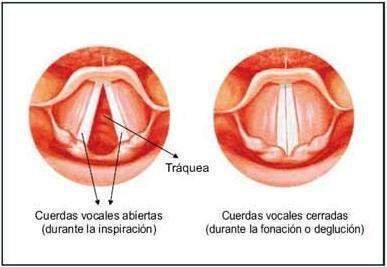Introduction to singing: The voice or the vocal cords // Nº 4

It's not just the vocal cords
Before I begin to explain something about the sound and the vocal cords, I must note that although it may not seem like it, the vocal cords do not make all the sounds when speaking. Through phonetic studies it is very determined that the vocal cords are not the only ones to intervene to produce the sound, there are a set of "circumstances" (to call it somehow) that have to happen for the production of the sound. Of which the Phonetics and Phonology are in charge of studying them. Both in speech and in singing. There is a branch called Phonetics and Singing Phonology. Of which I will not speak in this article, due to certain levels of complexity that are not part of an “introduction”.

The vocal cords
Well, first of all, speaking of the voice strings, I must say that they are not strings. They really are two muscles, vulgarly speaking, because scientifically they are called differently. I remember reading, a long time ago, a scientific article where it is called the vocal replicas of the laryngeal ligament. In some blog and web pages you can find other ways to call the vocal chords. But no matter what they call it, it turns out that they are membranes that are located inside the larynx. And they look like the image in a little bit below. They open when you breathe and close to create sound.
I will not elaborate on a process that you can read anywhere else, which I am more than sure will explain in more detail and in detail. So it is homework.
The “Voice-box”
The English often call the larynx "voice-box", which means voice box or sound box (in my humble translation). Well, as I said before, inside are the vocal cords, for that reason the name. In order not to stun more with things that cannot be explained very well, I will not dedicate myself to explaining its location or how the larynx works in singing. I also leave them as homework for the hours.
However, what I want to highlight, and that you may not find easily, is that the larynx is located in the trachea higher or lower depending on certain physical conditions (I will explain so little, calm). Which is what will determine if your voice is low or high. In the case of men, that would determine if you are a baritone or a tenor; in women, soprano or counter-alto. And of course, when we sing they can move a little to adjust to the timbre (how high or how low) we are singing during the song. A mechanism that is worth studying has important to know how it works, in order to improve and expand our voice register. Unfortunately there is little information and exercises on this aspect. And many of the exercises meet the imaginary complexity of singing. For example, when you sing high-pitched we have the habit of thinking that we are climbing a ladder going up and up as we sing higher pitches; well, to counteract that thought, and lower the larynx, we must imagine that we are descending and at the same time imagine that we sing backwards to better stretch the vocal cords. Did you understand Imagine that and tell me.
